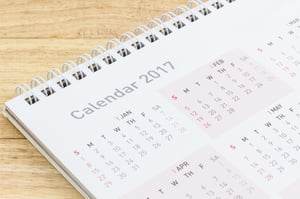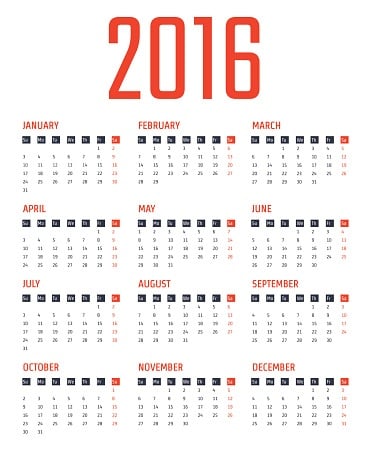Is one of your recurring nightmares the hashtag #YourEventSucks? Or is your nightmare that no one will be around to generate tweets about your event, awesome or otherwise?
Your nightmares may have nothing to do with your actual event. It could well have more to do with your event's communication. After all, you'll recall the phrase:
"If a tree falls in a forest and no one is around to hear it, does it make a sound?"
 That thought has more to do with getting communication out in the first place and generating RSVPs. But it applies as well to the depth and detail of your ongoing communication that supports your event and builds that aura of awesomeness throughout everything you do.
That thought has more to do with getting communication out in the first place and generating RSVPs. But it applies as well to the depth and detail of your ongoing communication that supports your event and builds that aura of awesomeness throughout everything you do.
So, how do we drive awesome communication around your event? As always, the best planning begins with the fundamentals: Why, Where, What, When, How, and Who.
Why—Drive Engagement from the Start
Pre-event promotion needs, of course, to focus on all the aspects of your event. But the Why is an absolute must to generate RSVPs. This is also the big key for driving engagement.
Building the full list of reasons for attending not only helps those who have never attended one of your events, it also helps keep the usual attendees in the fold. This latter group—that you count on attending year after year—may well have new constraints around their budget and availability. You need to build the case for their attendance just as much as for those who are considering your event for the first time.
A big key to getting at the Why and driving engagement is clearly articulating your event's unique selling point. What sets it apart from the other events that your members consider? What makes it a unique experience that cannot be missed?
A tagline or theme can be a standard boring ritual or it can be a dynamic opportunity to communicate all the fun and excitement around your event. Spend some time really developing this key communication component.
You need to stand out from the competition. You need to clearly communicate Why they should attend from engaging with others in a great time to learning all that's going on in your industry and your association.
Where and What—Details Are a Big Deal
Your event attendees want to know everything about your event, often before they even decide to attend and definitely after they've registered for your event. So it's critical to get this information out to them in a timely manner and to do so often.
An example is how to get to your event. If there is a major road construction project underway, you want to advise the best way to avoid it and arrive on time. Your event could well get a bad reputation just because so many suffered through huge delays and missed key activities due to their late arrival—all of which is outside your direct control but not outside your ability to inform your attendees.
Here are few items to consider in your pre-event communication:
• Detailed information on location including parking and access.
• Timeline of event, session starts, etc.
• Speaker information including biography and topics.
• Necessary downloads including apps and social media channels to follow.
• Food and drinks that will be provided. Pay attention to special diets.
• Dress attire. You don't want people to feel out of place.
• Weather. Expected temperatures and weather, particularly important for outdoor events and transportation.
It is vitally important to prepare the way for a superb experience by providing all the necessary details so that every event participant feels assured that they will fit in perfectly. Then when they get there, make sure they do fit in.
Provide a memorable and favorable experience—not a nightmare that will never be erased from their memory of your event and your association.
When—Timing Is Everything
There are four key timing components of your event communication:
- Pre-Event Long Range. Start the drum roll early and keep it going. Get your potential attendees excited about attending and facilitate their ability to share this information with their friends and colleagues.
- Pre-Event Short Range. Create urgency and excitement in this stage by sharing information as it becomes available. Get them fired up about attending and make sure they sign up to start getting even more information about your event.
- During the Event. This aspect of your communication will be vital to ensuring everyone maximizes their time and takes away the best memories as well as the most valuable content. This may well be the peak of your communication. Don't forget to establish a unique hashtag that can really get information out to attendees and all those who wish they could attend, particularly now that the event is such a success—as witnessed by all this great communication that is being shared by attendees.
- Post Event. Don't forget this vital stage of communication. Find out what worked and what didn't by surveying attendees. Plus, if you promised to get slide decks and other information out to attendees, make sure that happens. It is vital to follow through on your promises.
In addition, keep up to date with the schedule, even though it may be changing on the fly. In fact, make it a big part of your promotion campaign. Use the release of your schedule as a media event. Get the press release rolled out along with updating all your media channels. After all, it's why people want to come to your event.
How and Who—Reaching Your Audience
Don't forget the "how" in the journalistic mix of things to pay attention to for your event communication. Mobile apps are big, but social media is bigger. You've got to be on Twitter.
I like the blog post The Best Tech Tools for Events. They pay a great deal of attention to mobile apps and how to best use them to your advantage—from pre-event marketing to actually building games to engage your attendees. Their approach to measurement of merging social media, registration, email, and mobile apps provides a great deal of insight into best practices.
Once in front of your audience, in this case event attendees and prospective attendees, how do you reach them? And, what's your message? I suggest starting out with all the items that I've outlined above. Then the trick is getting someone to actually read them.
The best approach by far is to follow these three keys:
- Concise
- Uncomplicated
- On Target
First, you need to get your message across in the fewest words possible. From that generally follows the second item, make it uncomplicated. Both of these might take some time to distill your words repeatedly before you find exactly the right blend of concise and uncomplicated while trying to address all the important details about your event.
Those details help keep you on target, the third key in this chain of how to reach your audience. If you're not on target, even if you've managed to get someone to read your message, it either doesn't matter or worse, it tells your audience they don't have any reason to read your future messages.
As always, on target means hitting the "What's in it for me?" button. That's the only reason someone's going to pay attention to your communication in the first place. Knowing your audience and what's important to them is a big reason for your association in the first place. That's the Who in this mix.
More Reading and Further Insight
I feel that this information will go a long way toward getting you started on your totally awesome event communication. But I've also found some interesting posts that will provide further information.
The Beginner's Guide to Event Communication offers sound insight into the timing for your communication, the tools to use, and the details that are so important for your event. I also like Creative Communication for Your Event, Part 1 and Part 2. This short series provides further insight into website landing pages, email messages, networking, and on-site communication.
Campaign Now
Blog posts and online searches can provide quite a bit of information. Then you've got to sort out what works and what doesn't for you and your association. I recommend reaching out to the experts for insight and direct help with your communication.
Campaign Now has substantial experience and expertise working with a wide range of associations. They can work with you on event communication campaigns with data, contact services, text message marketing, direct mail, email marketing, digital development, media advertising, as well as public and media relations.
Leverage their expertise for your association. Give them a call.
Contact us at (855) 329-4327 or info@campaignnowonline.com.





